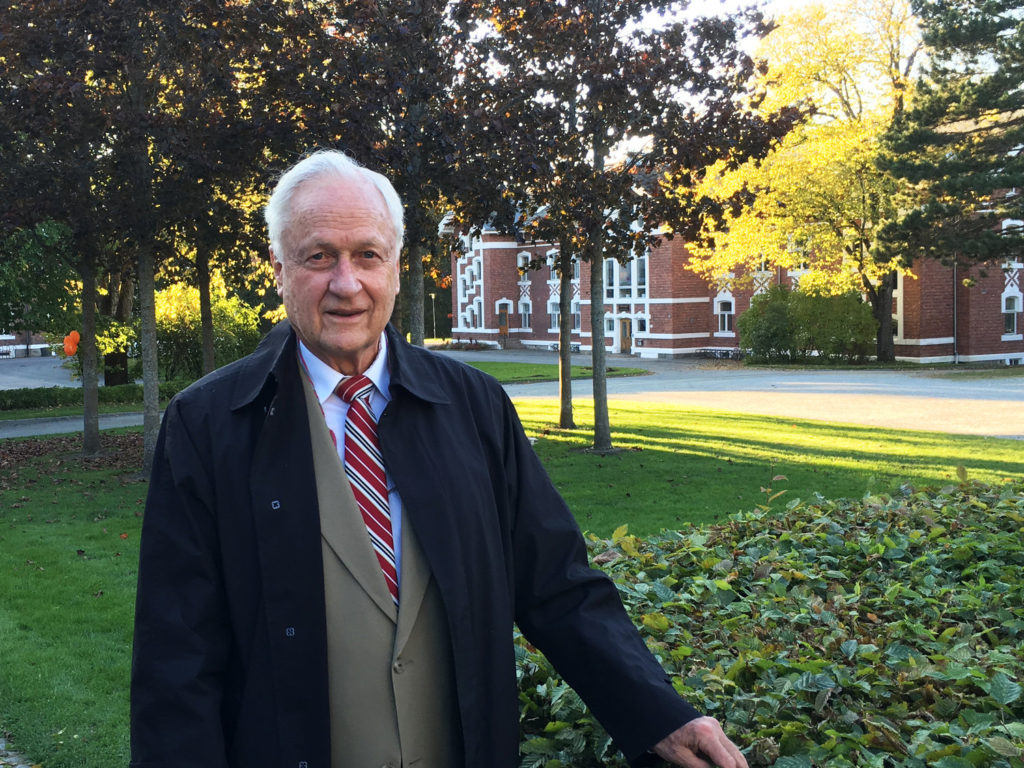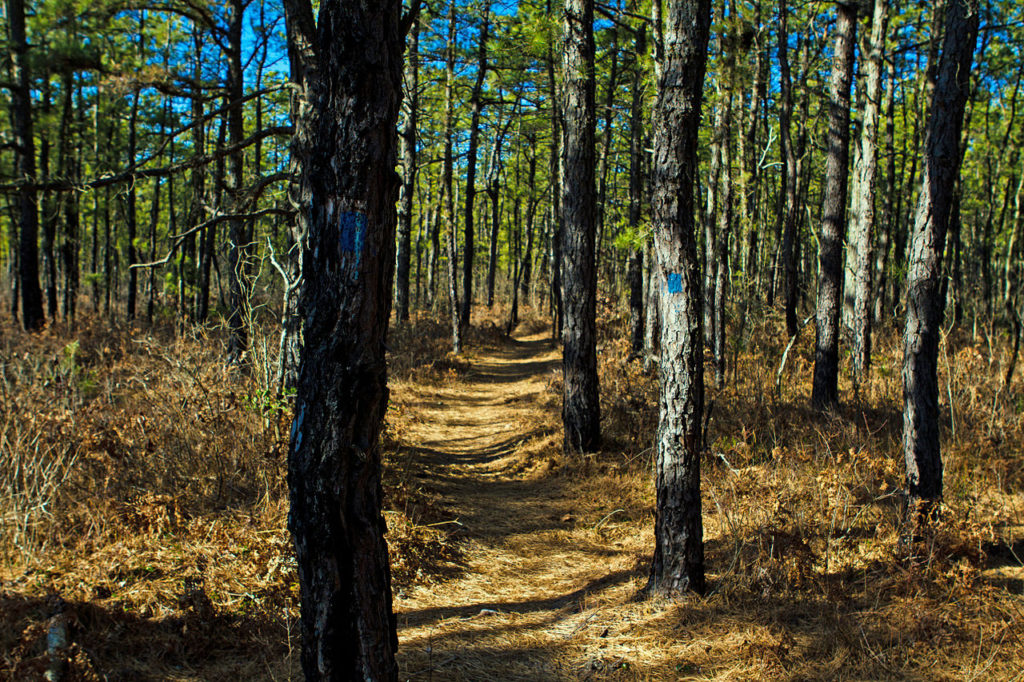
An interview with R.T.T Forman: curiosity, resilience, and the gratification of teaching
Written by Eric Jensen, a master’s student in the Graduate Degree Program in Ecology advised by Michael Falkowski and Jody Vogeler. You can find Eric on Twitter @moonlitbotanist.

Richard T.T. Forman breaks out of his response to one of our interview questions when he notices a hawk outside of his office window. He immediately recognizes it as a red-tailed hawk, one of two species—the other, a peregrine falcon—that frequent the courtyard that his Harvard office looks down upon. This minor diversion and one that ecologists like Forman are typically eager to make. I am struck that it also represents a microcosm of his career trajectory and academic interests overall, one defined initially by laying the theoretical foundations of landscape ecology and eventually evolves by extending the principles of landscape ecology into human systems and the built environment. As evidenced by the regular visits that Forman receives from the red-tailed hawk and that the bird nests just some 400 yards from his office, it seems the bird finds significant habitat value on the campus at Harvard.

In our Foundations of Ecology class, we were tasked with working in groups to research a successful ecologist. Because our group—consisting of Department of Ecosystem Science and Sustainability master’s students Jillian Laroe, Shaunie Rasmussen, and Sam Gersie, as well as Arian Brazenwood from Forest and Rangeland Stewardship—gravitated generally toward landscape ecology, urban ecology, and biogeography we jumped at the opportunity to profile Richard Forman. Forman is widely recognized as a “father of landscape ecology” and has done much to establish the discipline itself and its namesake academic society, the International Association of Landscape Ecology. With each of our group meetings it seemed that each of us was uncovering new connections between his work and our own interests and research; under each stone we turned over we discovered another piece in the complicated puzzle of landscape ecology—one that has only expanded since Forman and his colleague Michel Godron published the first modern textbook on the subject in 1986.
By any measure, Richard Forman has had an illustrious career. His C.V. reads like a laundry list of international accolades and legendary collaborations across a broad spectrum of socio-ecological fields. He has served as Vice President of the Ecological Society of America and was the founding Vice President of the International Association of Landscape Ecology in 1982. Often pioneering new subdisciplines, Forman has written ten books, contributed to conservation and urban planning on every continent except for Antarctica, and is Professor Emeritus at Harvard. He has worked with other notable scientists such as Steward Pickett, Heine Oosting, and Murray Buell, advised Ann Bartuska, and even has ties to Robert MacArthur, who served on his Ph.D. committee. So, when he responded within two days to accept our invitation for a phone interview it would be difficult to overstate our excitement.
We focused our interview questions on his career trajectory since many scientists rarely follow a linear path. Beginning with his early research in the mid-1970s, Forman’s questions were unique and novel amongst plant ecologists at the time. His early work was based in the Pine Barrens of New Jersey and assessed relationships between forest patch size and bird biodiversity. It proved to be one of the first statistically designed, spatial patterning studies in ecology—a fundamental concept in landscape ecology today. Forman’s research in the Pine Barrens culminated in what he frequently refers to as his “Eureka! moment.” He realized that his forest patches were not simple replicates as he had initially treated them. Rather, the landscape context surrounding each individual patch—today recognized in landscape ecology as the matrix—had a direct influence upon the species that used each patch as habitat. Forman points to this “Eureka! moment” as the demarcation point beginning his career as a landscape ecologist.

Following his epiphany, Forman did what any diligent researcher would do and consulted the literature. He searched for mentions of patches, spatial heterogeneity, or anything to describe these phenomena. He found little initially, but he did find enough to keep him moving forward as he worked with colleagues to begin laying the foundation for landscape ecology in the late 1970s and 1980s. Since then he has traversed to emerging disciplines of road ecology, urban ecology, and, most recently, town ecology. Since Forman’s recent work has migrated toward increasingly interdisciplinary studies of ecology in the built environment, he has applied concepts of spatial patterning, flows and movements, and change from landscape ecology in the context of human settlements. In doing so, he has helped to open the minds of diverse audiences to the potential for incorporating ecological outcomes into municipal and urban planning. In his newest book, Towns, Ecology, and the Land, Forman proposes towns and villages—home to nearly half the world’s population—as potential ecological hotspots due to their characteristics and roles in surrounding agricultural, forest, and desert lands.
When asked what he considered his greatest success he said that his efforts to be a good teacher have been the most rewarding. During our interview, he spoke glowingly of his students who ran with ideas presented in his courses leading to fresh research contributions and of epiphanies that came to him in group settings working with students. His career has centered around teaching. His most notable publications have largely been textbooks that have likely had influence immeasurable by traditional citation metrics. He has also been nominated for numerous teaching awards for his role in the classroom with both undergraduate and graduate students. Though currently Professor Emeritus, Richard Forman still finds time to engage with communities in his travels, such as through public talks on urban and town ecology, as he did in a recent visit to Santiago, Chile. Even between dog-sledding and monkey-puzzle-tree forest exploring in the Andes, Forman continues his commitment to sharing ecology frontiers internationally.
Next week the International Association of Landscape Ecology US chapter will convene its annual meeting here in Fort Collins, an event that Warner College is helping to sponsor. With workshops, symposia, and presentations on landscape modeling, remote sensing, and time-series analysis applied across diverse systems, it will highlight the interdisciplinary nature of landscape ecology—likely its greatest strength for addressing contemporary ecological challenges. It also promises to demonstrate just how far the field has come since Forman published his 1986 book. At the conference on Wednesday, April 10 from 12:45-1:30 pm, Richard Forman will make a luncheon presentation on his newest book, Towns, Ecology, and The Land, of particular interest to landscape ecology and related fields.
Extras: listen to Richard Forman talk about his greatest accomplishment in the YouTube clip above.